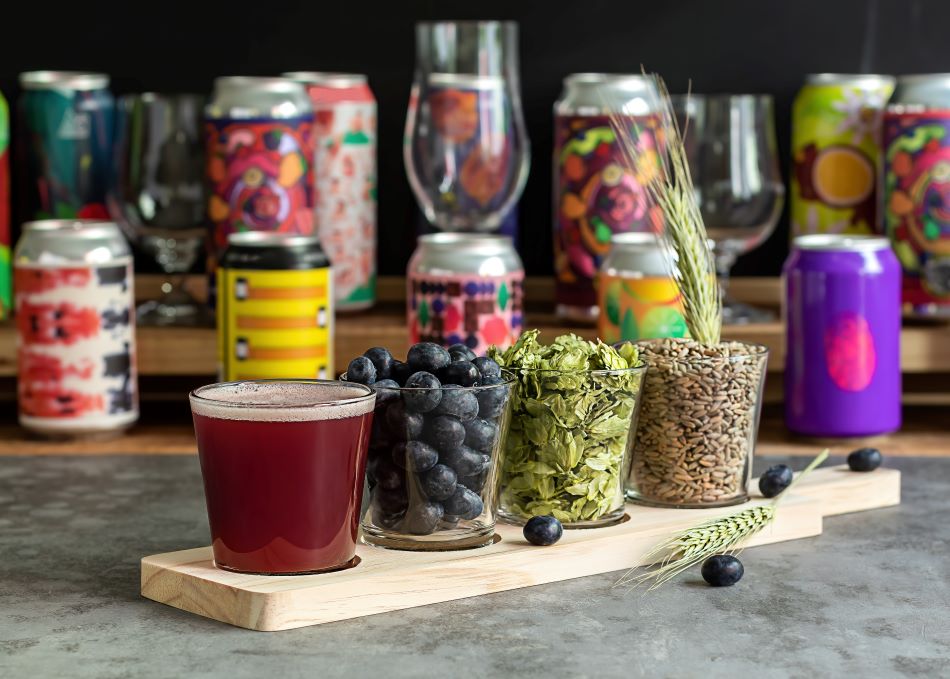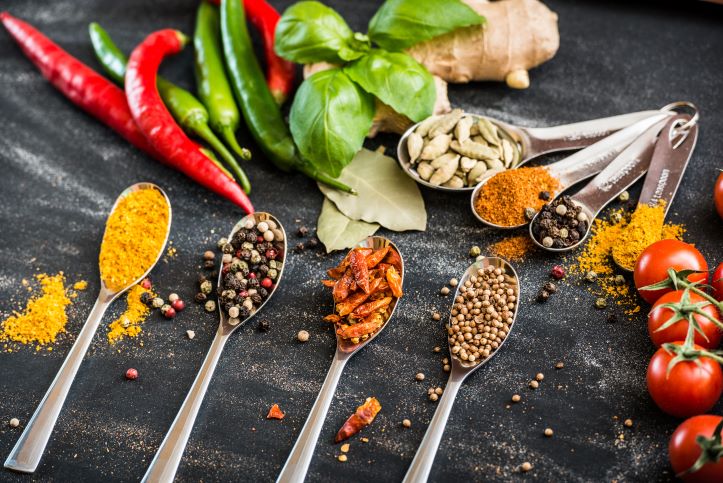
At a recent beer festival, my brewery stood between a craft brewer who had used cucumber to produce his special beer and another who had infused green tea into his amber beer and some exotic fruits into his seasonal beer. A friend of mine who was passing by noticed it and laughingly said she wasn’t sure if it was a fruit and vegetable market or a beer festival.
Different brewers can be very creative in the use of ingredients for their beers and this is a personal choice that I am not criticising. I prefer to brew beers with classic ingredients with the exception of a bit of honey in the honey beer Ventuno. My ‘signature’ Fermento is to produce balanced beers, where every ingredient can be enjoyed at the same time in a glass.

These days, ingredients of any kind are added to beers, and things are getting a bit confusing. For example, how comes that some beers taste so fruity and they don’t contain real fruits? And why that chocolate taste in the stouts? My aim with this blog post is to look into beer ingredients and share my experience on those that are traditional and those that can be classified as “creative”.
Classic beer ingredients
Water, malt, hops and yeast are the classic beer ingredients. About 500 years ago, their use was specified in the famous German Beer Purity Law Reinheitsgebot. The Germans are very serious about this and you cannot call it beer if any other ingredient is added to these four.
The water content in beer is over 90% and its purity is very important for excellent beer. Minerals are also important: hard water is for example more suitable for stouts, while soft water is recommended for light beers such as lagers and pilsners.
Malts provide sugars for fermentation, to develop alcohol and proteins for a good foam. I am often asked how to obtain an amber-coloured or black beer. The colours of these beers depend precisely on the choice of roasted malts used and their quantity.

Hops impart bitterness to beer and are used as a natural preservative, preventing the attack of bacteria. This is one of the reasons why beers do not need the addition of sulphite as is the case with wine. Hops are responsible for bitterness and also for flavours. It is amazing how many aromas are given by hops: resinous, floral, fruity, herbaceous, etc. We use in particular a special hop for our wheat beer Fermento Mistral, which has a pleasant fruity aroma of mango.
Yeast utilise the sugars in the malt and convert them into alcohol and gas. Some industrial brewers add artificial gas, which gives these beers that sense of bloating. On the contrary, I find that the gas produced naturally by yeast is fine and delicate and not as aggressive as the artificially added gas. Yeasts also impart flavour, like the typical banana flavour of German wheat beers or the distinctive taste of Belgian beers.
Creativebeer ingredients
As innovative as this may sound, in reality, before the discovery of hops, virtually any type of herb and berry was used as an ingredient in beer. In the last 20 years, however, the trend of adding extra ingredients has returned.
This is how it works in a simple way. You want to brew, for example, a classic stout and use the traditional beer ingredients: water, malts, hops and yeast. Pay close attention to the choice of malts, because the right mix of roasted malts gives the beer its black colour, as well as balanced flavours of coffee, chocolate, liquorice, etc.

If you want to use creative beer ingredients, then add chocolate beans or chocolate powder. This is not cheating and is permitted everywhere except in Germany, where it is not possible to call this beer. However, the chocolate flavour is there and comes through, so the brewer does not have to worry about which roasted malt to use to give this flavour.
If you want to be extremely creative, do like some brewers who add beer ingredients such as oysters or oyster shells or squid ink. There is no other way to add a fishy flavour to beer than by adding fish. If you really want to have it in your beer…. Other aromatic ingredients can be added to a stout: black pepper and chilli pepper, for example, to give it a more pungent touch.
The same applies to a fruity beer. Brewers can add mango juice to a beer and make it fruity, or they can add a selected hop with a mango flavour, as we do to make our Mistral, a Weizen with a fruity flavour. Orange peel and cardamon are used in the Belgian wheat beer style, giving a crisp, citric note that provides a refreshing sensation to this style of beer.
Herbs are also back and I actually appreciate that beers from certain regions use local agricultural products. For example, I had a couple of beers brewed with basil leaves from Liguria and a beer with chestnuts grown in the Ticino region of Switzerland.
I prefer skipping the details of other extremely creative ingredients such as other fishes and, in extreme cases, even meat, that I find both too far from being proper beer ingredients. In general, I am not against adding creative ingredients to beer, and I only appreciate them when they are barely noticeable. The story goes that the first basil beer I tasted felt like drinking spaghetti with pesto…. that was too much.
Why using only classic beer ingredients then?
If it is possible to use a ‘creative’ ingredient in a beer to provide a special flavour, then why bother brewing beers using only classic ingredients?
I believe that the skill of a good brewmaster is to find the best classic ingredients and to use them wisely to produce great, tasty and balanced beers. In a beer competition, Fermento Libericawon won the silver medal in the stout category. Very happy with the result, I later found out that the gold medal winner had used chocolate powder for the flavor and lactose for the creaminess as part of the ingredients.
All well and good and I congratulate the winner. However, staying true to the Fermento signature, I won my personal challenge to brew a beer that tasted like chocolate without adding chocolate and with a hint of coffee without using coffee.
Nowadays, brewers have many options of beer ingredients to choose from, be they traditional or creative. Each brewer is free to choose his or her own brewing style and the skill lies in staying true to this. If the beer only tastes like that added ingredient, then there is something wrong with it. Beers must taste like beer and all the main ingredients must be clearly perceptible. This is, what I call a balanced beer.